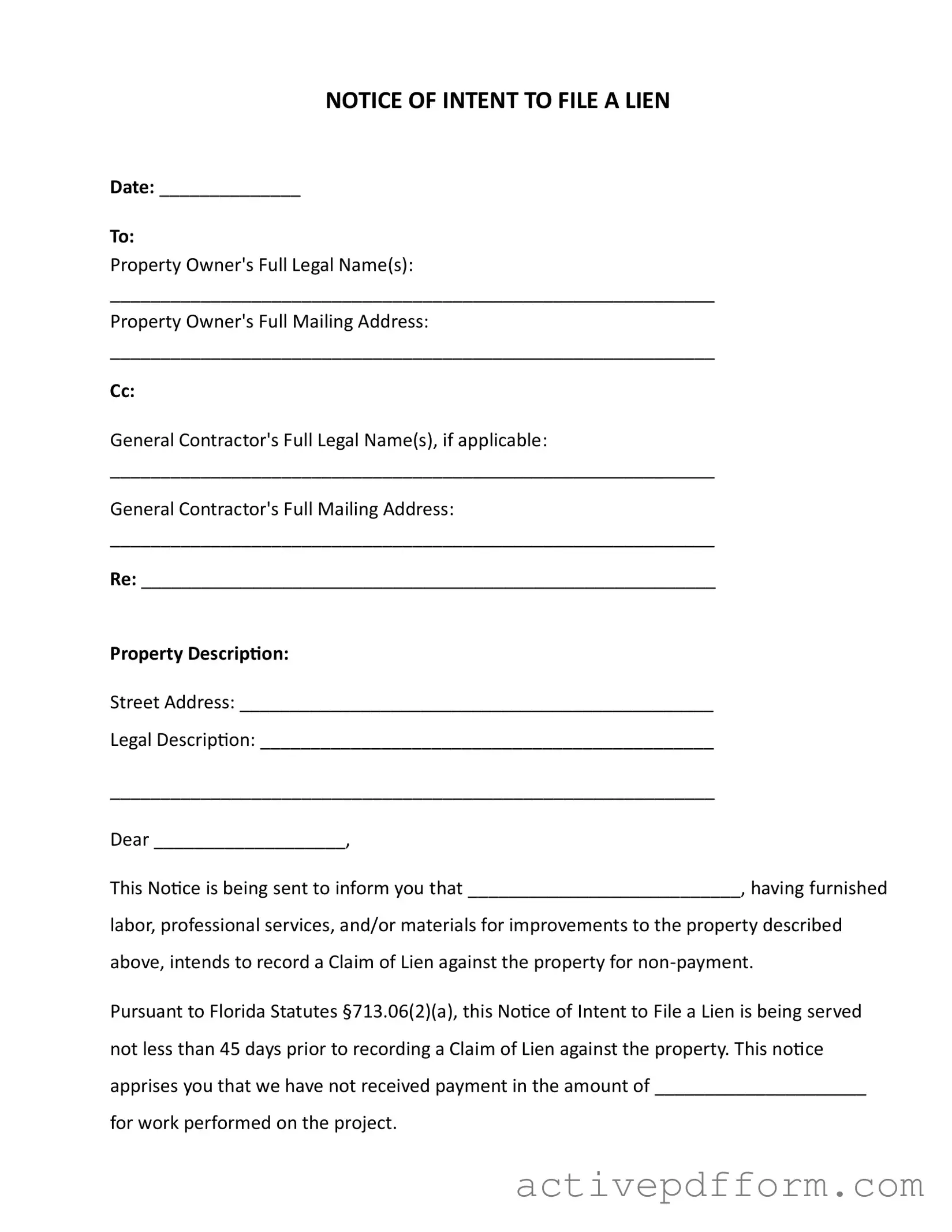NOTICE OF INTENT TO FILE A LIEN
Date: ______________
To:
Property Owner's Full Legal Name(s):
____________________________________________________________
Property Owner's Full Mailing Address:
____________________________________________________________
Cc:
General Contractor's Full Legal Name(s), if applicable:
____________________________________________________________
General Contractor's Full Mailing Address:
____________________________________________________________
Re: _________________________________________________________
Property Description:
Street Address: _______________________________________________
Legal Description: _____________________________________________
____________________________________________________________
Dear ___________________,
This Notice is being sent to inform you that ___________________________, having furnished
labor, professional services, and/or materials for improvements to the property described above, intends to record a Claim of Lien against the property for non-payment.
Pursuant to Florida Statutes §713.06(2)(a), this Notice of Intent to File a Lien is being served not less than 45 days prior to recording a Claim of Lien against the property. This notice apprises you that we have not received payment in the amount of _____________________
for work performed on the project.
As per Florida Statutes §713.06(2)(b), failure to make payment in full or provide a satisfactory response within 30 days may result in the recording of a lien on your property. If the lien is recorded, your property could be subject to foreclosure proceedings, and you could be responsible for attorney fees, court costs, and other expenses.
No waivers or releases of lien have been received that would affect the validity of this lien claim.
We would prefer to avoid this action and request your immediate attention to this matter. Please contact us at your earliest convenience to arrange payment and avoid further action.
Thank you for your prompt attention to this matter.
Sincerely,
_________________________ [Your Name]
_________________________ [Your Title]
_________________________ [Your Phone Number]
_________________________ [Your Email Address]
CERTIFICATE OF SERVICE
I certify that a true and correct copy of the Notice of Intent to File a Lien was served on
______________ to ____________________________ at
__________________________________________ by:
□Certified Mail, Return Receipt Requested
□Registered Mail
□Hand Delivery
□Delivery by a Process Server
□Publication
____________________________ |
____________________________ |
Name |
Signature |

